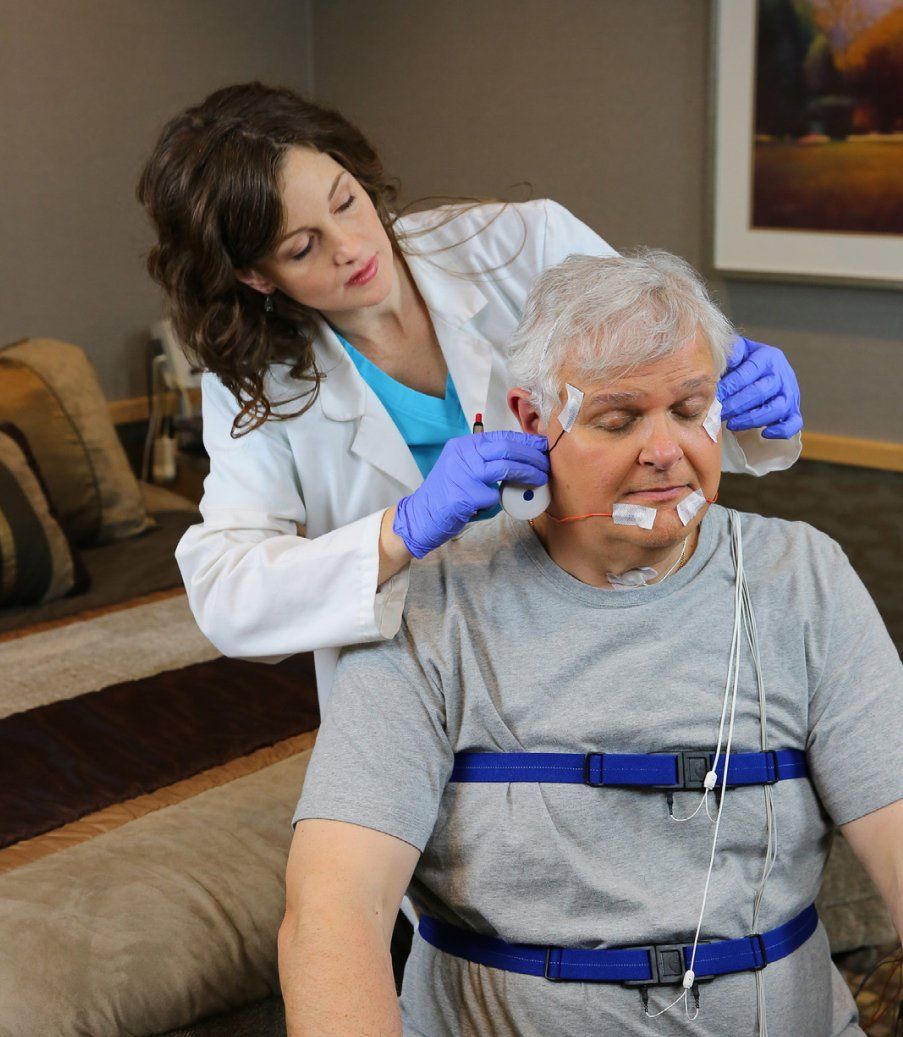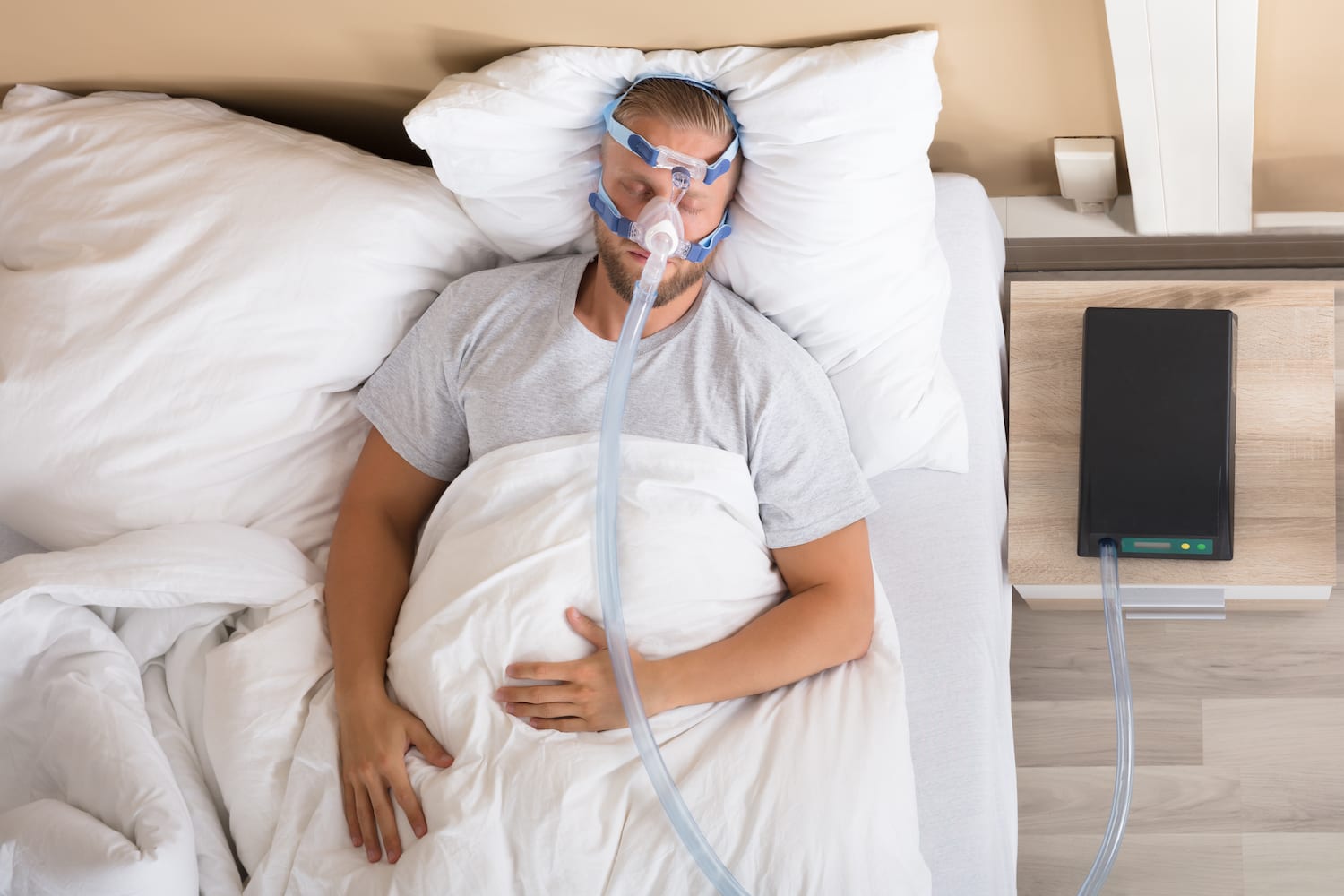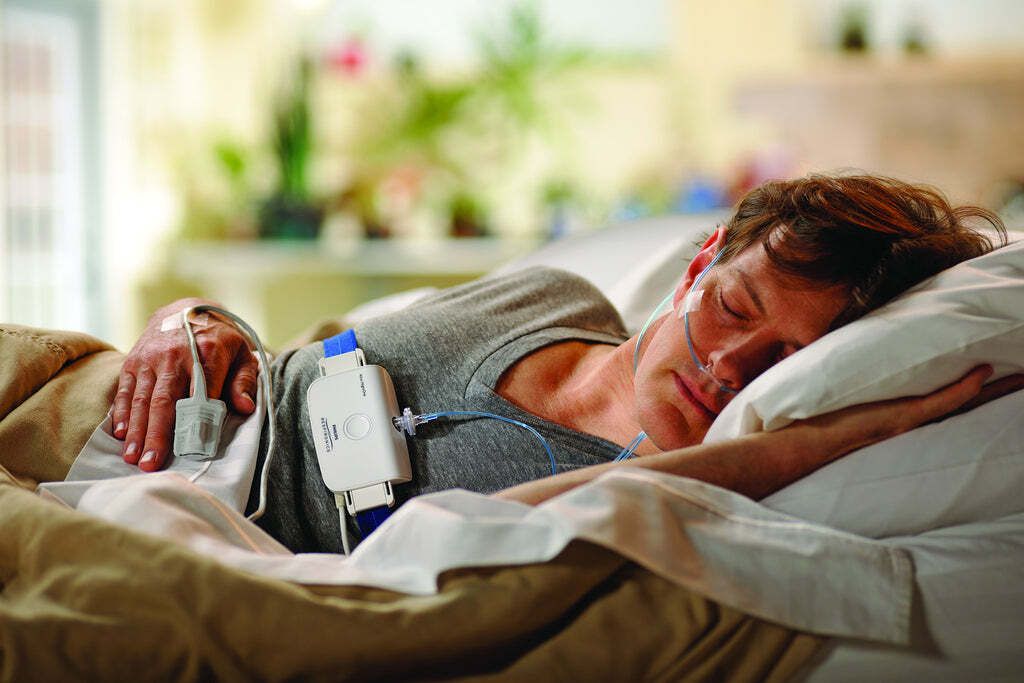About our Practice
Sleep Studies
What is a sleep study?
If your physician suggests that you undergo a sleep study, or polysomnography, you may be wondering what's involved in this test and what to expect. Sleep studies are a non-invasive, overnight test which helps the physician diagnose sleep disorders such as sleep apnea, periodic limb movement disorder, narcolepsy, restless legs syndrome, insomnia, and nighttime behaviors like sleepwalking and REM sleep behavior disorder. During this exam, your physician is able to monitor you while sleeping to detect the presence of abnormal disruptions to your sleep and breathing.
There are two main types of sleep studies performed today, In Lab Sleep Studies and At-Home Sleep Studies. The In Lab study is a more comprehensive type of sleep study which is performed in a sleep lab and involves an overnight stay for testing and observation. The alternative is an At-Home sleep study which is used exclusively for the diagnosis and management of obstructive sleep apnea. You will find a more detailed description of both types of testing below. The most appropriate type of testing will be determined by your physician, based on you clinical situation.


What is an In Lab Sleep Study?
An In-Lab sleep study is a comprehensive overnight test performed by a skilled technician using various sensors to collect important data about your sleep. This test will be performed a in a facility specially designed to mimic the experience of staying in a hotel. The test will involve the preparation and application of several small electrodes, sensors, and belts to monitor things such as brain activity, eye movements, muscle tone, airflow, heart rhythms, and leg movements.
While you are sleeping, the electrodes will record data to help your physician identify your sleep stages, cycles of sleep, and possible causes of disruption that occur while you are asleep. The most common disorder observed during an overnight sleep study is sleep apnea, which is interruptions in your breathing that cause sleep frequent disruption to your sleep. This is often accompanied by loud snoring, morning headaches, and daytime sleepiness.
In addition to sleep apnea, there are numerous other forms of sleep disorders which could be diagnosed during an In-Lab sleep study. Some examples of other sleep disorders include REM Behavior Disorder, Periodic Limb Movement Disorder, Sleep Walking, and Sleep Talking.
What is a Home Sleep Test (HST)?
A Home Sleep Test (HST) utilizes a simple recording device to collect information needed to diagnose sleep apnea. The recording device involves sensors which will measure breathing effort, airflow, oxygen levels, and heart rate. A Sleep Technologist will provide clear instructions for device application and you will wear the device at home for one or two nights while you sleep.
This has become a widely accepted method of testing for sleep apnea which is covered by most insurance plans. Not everyone is a candidate for a home sleep study due to the recording limitations involved with this simple device. Your physician may recommend a home sleep test if the following criteria are met:
- It is highly likely that you have moderate to severe sleep apnea
- You have no significant medical conditions other than the suspected sleep apnea
Some situations which may exclude you from having a home sleep study include:
- You do not have a high risk of sleep apnea
- Your doctor suspects that you have another sleep disorder
- You have certain medical conditions including pulmonary diseases, neuromuscular diseases or congestive heart failure
- It is physically difficult for you to administer the test at home
In these cases of exclusion from a home sleep study, your physician may recommend an In Lab sleep study instead of a home sleep test.





